
IRIS login | Reed College home Volume 90, No. 1: March 2011
Reediana Briefs

Making Slavery History: Abolitionism and the Politics of Memory in Massachusetts (Oxford University Press, 2010), by Margot Minardi, assistant professor of history & humanities, focuses on how commemorative practices and historical arguments about the American Revolution set the course for antislavery politics in the nineteenth century. The book is centrally concerned with the relationship between two ways of making history, through social and political transformation on the one hand and through commemoration, narration, and representation on the other. Making Slavery History examines the relationships between memory and social change, between histories of slavery and dreams of freedom, and between the stories we tell ourselves about who we have been and the possibilities we perceive for who we might become.

Via close readings of films and literature, John Urang, visiting assistant professor of German at Reed since 2007, investigates the erratic economy of romance in that most planned of economies, the former German Democratic Republic, in his book Legal Tender (Cornell University Press, 2010). Most broadly, Legal Tender asks: why do we tell so many love stories? What do love stories do that make them so indispensable and so ubi-quitous? John’s contention is that love plots provide a robust and elastic framework within which to address discrepancies between the claims of ideology and the conditions of lived experience. The book contributes to a more nuanced understanding of East German cultural history, as well as to general theories of modern Western romance.

Sally Watson ’50 has published her 22nd book and first nonfiction title, Tailwavers (iUniverse), the tale of an ailurophile and her collection of cats and friends in England and America, told partly in letters. Sally joined a cat rescue group and collected an assortment of her own, called the Cataclysm. Their letters describe champions and moggies, local doings and loco cats, contretemps, calicoes, and cat shows, with style, observation, and wit.
An essay by Larry MacKenzie ’62, “A Pedagogy of Respect: Teaching as an Ally to Working Class Students,” was published in Coming to Class: Pedagogy and the Social Class of Teachers (Boynton/Cook, 1998).

Galen Cranz ’66 is coeditor with Eleftevios Paulides of Environmental Design Research: The Body, the City, and the Buildings in Between (Cognella, 2010). Galen describes the book as a new reader for those who teach human-environment relations and social perspectives on architecture.
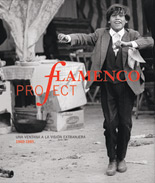
Flamenco Project: Una ventana a la visión extranjera 1960–1985, the catalog-book for the exhibition Flamenco Project edited by Steve Kahn ’66 and Ignacio González, was published in 2010 by Cajasol/Obra Social in Spain. The bilingual edition contains museum-quality photography documenting the foreign experience of gypsy flamenco in Andalucia, and essays by prominent aficionados, historians, and critics.
Fred Rogers ’66 published “Taking Your Home’s Energy Temperature” in Home Power magazine (issue 139, October–November 2010), a publication focused on do-it-yourself, grassroots approaches to renewable energy. Fred explained how to quantify the energy savings resulting from insulation and conservation based on information available from NOAA and the regional climate centers, and illustrated the approach using data from his home in Reno, Nevada. To read the article, visit www.dri.edu.

Jane Burbank ’67, with her husband Fred Cooper, recently published Empires in World History: Power and the Politics of Difference (Princeton University Press, 2010). This study starts with ancient Rome and China and ends with the present. “It would be of interest to people thinking about world history, and the problems with nation-state politics.” Jane says she pulled out all of her old humanities texts in order to create the book.

Home Winemaking for Dummies, by Tim Patterson ’68, was published by John Wiley & Sons last fall. “Though I am not the first Reedie to publish a Dummies book, it’s still far from the standard university-press literary trajectory commonly found among alums. For that matter, although there are a handful of Reedies in the wine business, that’s not a core Reed career track, either. Perhaps it was my year of classical Greek with Fred Peachy [classics, 1956–82] that got me interested in Dionysus and his fellow revelers; perhaps it was my stint as student body president that got me used to embarrassing myself in public; or perhaps it was the knowledge that a world-famous wine region sprang up in the Willamette Valley starting the year I left Portland, making me forever play catch-up.”
“Javier, Dying in the Land of Flowers,” by Deborah Ross ’68, appears in Breaking Waves, a benefit anthology for the Gulf Coast Oil Spill Relief Fund, and is available in electronic format from bookviewcafe.com. Deborah’s story was first published in the Magazine of Fantasy and Science Fiction in 1996.

An edited collection, Text and Genre in Reconstruction: Effects of Digitalization on Ideas, Behaviours, Products and Institutions, by Willard McCarty ’70, was published by Open Book Publishers (2010). Incorporating scientific, sociohistorical, materialist, and theoretical approaches, the work explores topics such as how computers have affected our relationship to language, whether the book has become obsolete, and how digitization is shaping our collective identity, for better or worse.
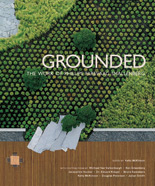
Grounded: The Works of Phillips Farevaag Smallenberg (BlueImprint, 2010) showcases the design of a leading Canadian planning, urban design and landscape architecture firm founded by Marta Farevaag ’71 and partners Chris Phillips and Greg Smallenberg. Grounded is a comprehensive, thought-provoking, and visually stunning book, composed of essays by foremost architects, landscape architects, planners, and historians, who touch on the approaches to design used by PFS. An interview with Marta and her partners is interspersed between the essays, forming the thread that holds the book together.

Voices from the Hemispheres, by Kenneth Harrison MALS ’71, presents more than 100 poems written over 50 years. Published by Vantage Press in December 2010, Voices showcases Ken’s inventive ideas and powerful lines. Who else would compose an elegy to a pencil, an ode to the thumb, and make a sly comparison of the ritual of shaving to an act of murder?

Burning Forest: The Art of Maria Frank Abrams, by Matthew Kangas ’71, published by the Museum of Northwest Art in 2010, contains dozens of images of Abrams’ paintings and mosaics and also tells the story of her life. Her work is contained in the library collection on Mercer Island, where she lives, and also in numerous other collections, such as the Seattle Art Museum and the Henry Art Gallery at the University of Washington.
Doug Forsyth ’77 writes about the Old West End Historic District in Toledo, Ohio, where he lives, for American Bungalow. His most recent article was “The Wealth of Craftsmanship” in issue 66 (Summer 2010). Doug let us know that Jeanne Brako ’78 was cited as an expert on American Indian textiles in the same issue.

David Henry Sterry ’78 is coauthor of The Essential Guide to Getting Your Book Published (Workman Publishing Company, 2010), described as the best, most comprehensive book for writers. The guide demystifies every step of the publishing process, offering assistance on topics such as selling a proposal, finding an agent, and self-publishing.
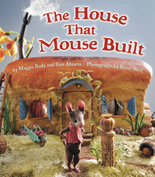
The House that Mouse Built, by Maggie Rudy ’80, is available this month from Downtown Bookworks. The book features Maggie’s marvelous mice in her hand-constructed sets. Maggie was encouraged by husband Richard Alden ’75 to produce a book that featured her art; Elsa Warnick ’64 assisted with the proposal. The House that Mouse Built will entertain readers of all ages with its imaginative scenes. (See mouseshouses.blogspot.com.)
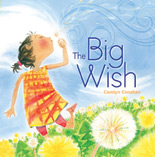
The Big Wish, by Carolyn Digby Conahan ’83, newly published by Chronicle Books, is replete with Carolyn’s delightful illustrations. When Molly gathers dandelions for a world-record wish, which one will she make? Everyone in her town has an idea and wants her to make the decision, but how do you pick one wish for the world?

Heather Fryer ’89, associate professor of history at Creighton University, is the author of Peri-meters of Democracy: Inverse Utopias and the Wartime Social Landscape in the American West (University of Nebraska Press, 2010). The book examines the influence of federally run communities on the demographic development and social history of the American West in the 20th century, and includes community studies of the Klamath Indian Reservation and Vanport City, both in Oregon. Heather is also editor of Cowboys, Indians, and the Big Picture (University of Chicago Press, 2002).

Deepak Sarma ’91 has published Classical Indian Philosophy: A Reader (Columbia University Press), the first book in more than 50 years to outline India’s key philosophical traditions. Deepak draws on seminal texts to clarify Indian philosophy’s basic language, positions, and issues. Organized by tradition, the volume covers six schools of orthodox Hindu philosophy, Jain philosophy, and the Mahayana Buddhist schools of Madhyamaka and Yogacara. In his acknowledgements, Deepak cites Ed Gerow [religion 1985–96] as a key influence. (Sorry we mangled this last time, Deepak.)
Van Havig ’92, head brewer for Rock Bottom Breweries in Portland, published “Maximizing Hop Aroma and Flavor through Process Variables” in the Technical Quarterly (Volume 47, 2010) of the Master Brewer Association of the Americas.

Shadab Ali Khan Hashmi ’95 has just published Baker of Tarifa, a book of poems based on the history of the Abrahamic cultures of Islamic Spain, Al Andalus. Poet Eleanor Wilner praises Shadab’s luminous, spare language, and her ability to capture the essence of Al Andalus. Shadab’s poetry has appeared in New Millennium Writings, the Cortland Review, Hubbub, the Bitter Oleander, and Nimrod International. (See shadabhashmi.com.)
In September 2010, Eve Lyons ’95 published a poem in Houston Literary Review and a short story in the literary magazine Word Riot. Last summer, she participated in a juried poetry workshop with one of her heroes, Marge Piercy, which was “an amazing experience on many levels.”

Jesse Spohnholz ’96, assistant professor of history at Washington State University, has written The Tactics of Toleration: A Refugee Community in the Age of Religious Wars (University of Delaware Press, 2010). In November 2010, Jesse came to Reed to present the related lecture “Twisting & Twisting & Twisting the Truth: Dissimulation as a Strategy for Preserving Peace during Europe’s Age of Religious Wars.”

Beyond Displacement: Campesinos, Refugees, and Collective Action in the Salvadoran Civil War, by Molly Todd ’96, was published by the University of Wisconsin Press (2010). The book examines how the peasant campesinos of northern El Salvador responded to the civil war that wracked the country from the mid-1970s to the early 1990s by taking to the hills. Molly is an assistant professor of history at Augustana College, specializing in Latin American history.

Chris Anderson ’02 is coauthor of CouchDB: The Definitive Guide (O’Reilly Media, 2010). The book explains how CouchDB’s schemaless document model is a good fit for common applications, and covers the basics of building mobile and offline capable web applications. The book is available through Amazon, and a free web version is at guide.couchdb.org.
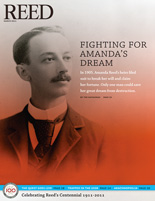

LATEST COMMENTS
steve-jobs-1976 I knew Steve Jobs when he was on the second floor of Quincy. (Fall...
Utnapishtim - 2 weeks ago
Prof. Mason Drukman [political science 1964–70] This is gold, pure gold. God bless, Prof. Drukman.
puredog - 1 month ago
virginia-davis-1965 Such a good friend & compatriot in the day of Satyricon...
czarchasm - 4 months ago
John Peara Baba 1990 John died of a broken heart from losing his mom and then his...
kodachrome - 7 months ago
Carol Sawyer 1962 Who wrote this obit? I'm writing something about Carol Sawyer...
MsLaurie Pepper - 8 months ago
William W. Wissman MAT 1969 ...and THREE sisters. Sabra, the oldest, Mary, the middle, and...
riclf - 10 months ago